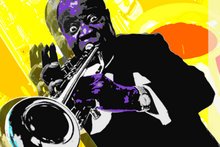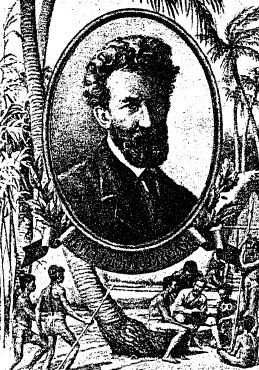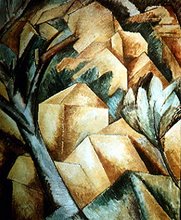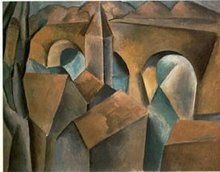Once upon a time the king of the Mawas (Hylobates - gibbon) monkeys fought with the king of the Siamang (Symphalangus syndactylus - black furred gibbon native to the forests of Malaysia, Thailand, and Sumatra) monkeys in the country where our ancestors lived. Our ancestors ran away from the place, being frightened by the war, and hid themselves in a plain covered with lalang grass. The king of the Mawas beat the king of the Siamang, and the latter, with his people, ran away and hid in the same plain as our ancestors. The king of the Mawas came and set fire to the grass, and the king of the Siamang and his followers fled and crossed the Perak River. Our ancestors did not run away, having hidden themselves in porcupine burrows , in order to escape from the fire. In spite of this, the fire reached them, and singed their hair, and this is the reason why we, their descendants, have curly hair to the present day.
The ancestors of the Malays, when the war arose, ran away down-stream carrying a rice-spoon with them, and that is why the Malays use a spoon in cooking their rice.
Our ancestors ran away up-stream carrying a pointed stick; and that is the reason why we still use a stick for digging tubers in the jungle.
Evans, Ivor H. N. 1970. Studies in Religion, Folk-Lore, & Custom in British Borneo and the Malay Peninsula. Frank Cass & Co. Ltd. Cambridge University Press. P. 134-135 (First published in 1923)(p. 146)
Sunday, January 13, 2008
Tuesday, December 18, 2007
Sovereign Nations and Sovereign States
The UN estimates the world’s Indigenous population represented in over 70 countries, to be between 300 and 350 million or approximately 5 percent of the total world population. The interests of states in relation to land and natural resources are often at odds with Indigenous peoples’ wishes. The issue places at theorists’ disposal an important theme to discussion: Can self-governing sovereign nations coexist with a sovereign state and not threaten the dismemberment of the existing state?
The 1993 negotiation between four Indian nations and the United States of America set a standard for future bilateral government-to-government relations between nations and states. Basing on that empirical example R. Ryser (1995) claims that although the Jamestown S'Klallam, Hoopa, Lummi and Quinault are not strategically important nations in any geopolitical sense, their success will point the way to peaceful resolution of conflicts between states and the nations inside their boundaries around the world.There are however some obstacles to assured constructive and positive outcome to government-to-government relations between nations and states. One of them is in the fact that among Indigenous peoples the foraging peoples dominated much of the world until recently (R. Blench 1999). Foragers, by the nature of their society, will not easily form articulate advocacy groups without external assistance. However, without such groups, their rights will be eroded rapidly in many places. For example, even numbers of hunter-gatherers worldwide are extremely difficult to estimate because many national governments such as those of India and Malaysia regard foragers as indicators of backwardness and forbid research relating to them.
I believe and empirical examples of the Quinault, Lummi, Jamestown S'Klallam and Hoopa negotiation with the United States of America as well as the establishment in 1999 of Nunavut, a self-governing territory for the Inuit people of north-west Canada, confirm my stance that the self-governing sovereign nations and sovereign states coexistence is a nearest future of international relationships in the world.
Ryser, Rudolph C., 1995. Resuming Self-Government in Indian Country: From Imposed Government to Self-Rule Inside and Outside the United States of America. Center for World Indigenous Studies. Ed. by Murdoch: University School of Law, Canning Vale, Western Australia. March.
Blench, Roger, 1999. Hunter-Gatherers, Conservation and Development: From Prejudice to Policy reform. Overseas Development Institute. # 43, June. London.
The 1993 negotiation between four Indian nations and the United States of America set a standard for future bilateral government-to-government relations between nations and states. Basing on that empirical example R. Ryser (1995) claims that although the Jamestown S'Klallam, Hoopa, Lummi and Quinault are not strategically important nations in any geopolitical sense, their success will point the way to peaceful resolution of conflicts between states and the nations inside their boundaries around the world.There are however some obstacles to assured constructive and positive outcome to government-to-government relations between nations and states. One of them is in the fact that among Indigenous peoples the foraging peoples dominated much of the world until recently (R. Blench 1999). Foragers, by the nature of their society, will not easily form articulate advocacy groups without external assistance. However, without such groups, their rights will be eroded rapidly in many places. For example, even numbers of hunter-gatherers worldwide are extremely difficult to estimate because many national governments such as those of India and Malaysia regard foragers as indicators of backwardness and forbid research relating to them.
I believe and empirical examples of the Quinault, Lummi, Jamestown S'Klallam and Hoopa negotiation with the United States of America as well as the establishment in 1999 of Nunavut, a self-governing territory for the Inuit people of north-west Canada, confirm my stance that the self-governing sovereign nations and sovereign states coexistence is a nearest future of international relationships in the world.
Ryser, Rudolph C., 1995. Resuming Self-Government in Indian Country: From Imposed Government to Self-Rule Inside and Outside the United States of America. Center for World Indigenous Studies. Ed. by Murdoch: University School of Law, Canning Vale, Western Australia. March.
Blench, Roger, 1999. Hunter-Gatherers, Conservation and Development: From Prejudice to Policy reform. Overseas Development Institute. # 43, June. London.
Monday, December 17, 2007
Philippine Civil Society Institutions in Taiwan
Abstract
Globalization causes more and more people leave their native countries to seek work abroad. The people of weaker nations become cheap labor. Due to the lack of protections, companies from powerful industrialized nations are able to force workers to endure extremely long hours, unsafe working conditions, and just enough salary to keep them working. Another important issue is that nowadays more and more representatives of indigenous peoples also leave their native places to work abroad. It causes the loss of the cultural heritage of indigenous peoples.
Can the Diasporas’ civil society institutions achieve their purposes such as to defend overseas workers and indigenous peoples’ human and cultural rights on the territory of foreign state? In my work I focus on Philippine civil society institutions in Taiwan. I study the subject on examples of two organizations. Both organizations play role of trade unions and have a purpose to defend overseas Filipino workers rights. One among them - the Cordillera Organization in Taiwan – besides that is an indigenous peoples’ organization, which try to defend human and cultural rights of Philippine Igorot ethnic group.
In this work I show that on the territory of foreign state the Diasporas’ civil society institutions can successfully achieve their goals only in cooperation with local NGOs.
Igor Sitnikov
Globalization causes more and more people leave their native countries to seek work abroad. The people of weaker nations become cheap labor. Due to the lack of protections, companies from powerful industrialized nations are able to force workers to endure extremely long hours, unsafe working conditions, and just enough salary to keep them working. Another important issue is that nowadays more and more representatives of indigenous peoples also leave their native places to work abroad. It causes the loss of the cultural heritage of indigenous peoples.
Can the Diasporas’ civil society institutions achieve their purposes such as to defend overseas workers and indigenous peoples’ human and cultural rights on the territory of foreign state? In my work I focus on Philippine civil society institutions in Taiwan. I study the subject on examples of two organizations. Both organizations play role of trade unions and have a purpose to defend overseas Filipino workers rights. One among them - the Cordillera Organization in Taiwan – besides that is an indigenous peoples’ organization, which try to defend human and cultural rights of Philippine Igorot ethnic group.
In this work I show that on the territory of foreign state the Diasporas’ civil society institutions can successfully achieve their goals only in cooperation with local NGOs.
Igor Sitnikov
Friday, October 12, 2007
James George Frazer
James George Frazer (1854 – 1941), was a Scottish social anthropologist influential in the early stages of the modern studies of mythology and comparative religion. Except for Italy and Greece, Frazer was not widely traveled. His prime sources of data were ancient histories and questionnaires mailed to missionaries and Imperial officials all over the globe. Frazer's interest in social anthropology was aroused by reading E.B. Tylor’s Primitive Culture (1871) and encouraged by his friend, the biblical scholar William Robertson Smith, who was linking the Old Testament with early Hebrew folklore.
He was the first to detail the relations between myth and rituals. His theories of totemism were superseded by Claude Levi-Strauss. The Golden Bough, his study of ancient cults, rites, and myths, including their parallels with early Christianity, arguably his greatest work, is still rifled by modern mythographers for its detailed information.
While James Frazer is best known for his tripartite division of all culture into the stages of magic, religion, and science, the bulk of his tome is devoted to an intermediate stage between religion and science – a stage of magic and religion combined. In this in between stage is to be found myth-ritualism, for only here do myths and rituals work together. In the stage of sheer magic there are rituals – the routines involved in carrying out the directions – but no myths, for there are no gods. In the stage of religion there are both myths and rituals, but they are barely connected. Myths describe the character and behavior of gods. Rituals seek to curry divine favor. Rituals may presuppose myths, which suggest what activities would most please the gods, but they are otherwise independent of myths. (R.A. Segal. 1998, 3)
the character and behavior of gods. Rituals seek to curry divine favor. Rituals may presuppose myths, which suggest what activities would most please the gods, but they are otherwise independent of myths. (R.A. Segal. 1998, 3)
“Frazer presents two distinct versions of myth-ritualism.
In the first version myth describes the life of the god of vegetation, and ritual enacts the myth, or at least that portion of the myth describing the death and rebirth of the god. The ritual operates on the basis of the Law of Similarity, according to which the imitation of an action causes it to happen. … The assumption that vegetation is under the control of a god is the legacy of religion. The assumption that vegetation can be controlled, even if only through the king, is the legacy of magic. … In the ritual a human being plays the role of the god and acts out what he magically causes the god to do.” (R.A. Segal. 1998, 4)
“In Frazer’s second version of myth-ritualism the king is central. …King is himself divine, by which Frazer means that the god resides him. Just as the health of vegetation depends on the health of its god, so now the health of the god depends on the health of the king… To ensure a steady supply of food, the community kills its king while he is still in his prime and thereby safely transfers the soul of the god to his successor. … The king is killed either at the end of a fixed term or at the first sign of infirmity.” (R.A. Segal. 1998, 4) In this second version of myth-ritualism instead of enacting the myth of the god of vegetation, the ritual simply changes the residence of the god. “The king dies not in imitation of the death of the god but as a sacrifice to preserve the health of the god. … Instead of reviving the god by magical imitation, the ritual revives the god by a transplant. It would therefore be better to restrict the term myth-ritualism to Frazer’s first version of the theory.” (R.A. Segal. 1998, 5)
Myth for Frazer, as for Tylor, serves to explain the world… For Tylor myth is the ancient and primitive counterpart to modern science and primarily to scientific theory, but for Frazer it is the counterpart to applied science.
The Myth and Ritual Theory. An Anthology. Edited by Robert A. Segal. 1998. Blackwell Publishers Inc. Malden, Massachusetts, USA.
He was the first to detail the relations between myth and rituals. His theories of totemism were superseded by Claude Levi-Strauss. The Golden Bough, his study of ancient cults, rites, and myths, including their parallels with early Christianity, arguably his greatest work, is still rifled by modern mythographers for its detailed information.
While James Frazer is best known for his tripartite division of all culture into the stages of magic, religion, and science, the bulk of his tome is devoted to an intermediate stage between religion and science – a stage of magic and religion combined. In this in between stage is to be found myth-ritualism, for only here do myths and rituals work together. In the stage of sheer magic there are rituals – the routines involved in carrying out the directions – but no myths, for there are no gods. In the stage of religion there are both myths and rituals, but they are barely connected. Myths describe
 the character and behavior of gods. Rituals seek to curry divine favor. Rituals may presuppose myths, which suggest what activities would most please the gods, but they are otherwise independent of myths. (R.A. Segal. 1998, 3)
the character and behavior of gods. Rituals seek to curry divine favor. Rituals may presuppose myths, which suggest what activities would most please the gods, but they are otherwise independent of myths. (R.A. Segal. 1998, 3)“Frazer presents two distinct versions of myth-ritualism.
In the first version myth describes the life of the god of vegetation, and ritual enacts the myth, or at least that portion of the myth describing the death and rebirth of the god. The ritual operates on the basis of the Law of Similarity, according to which the imitation of an action causes it to happen. … The assumption that vegetation is under the control of a god is the legacy of religion. The assumption that vegetation can be controlled, even if only through the king, is the legacy of magic. … In the ritual a human being plays the role of the god and acts out what he magically causes the god to do.” (R.A. Segal. 1998, 4)
“In Frazer’s second version of myth-ritualism the king is central. …King is himself divine, by which Frazer means that the god resides him. Just as the health of vegetation depends on the health of its god, so now the health of the god depends on the health of the king… To ensure a steady supply of food, the community kills its king while he is still in his prime and thereby safely transfers the soul of the god to his successor. … The king is killed either at the end of a fixed term or at the first sign of infirmity.” (R.A. Segal. 1998, 4) In this second version of myth-ritualism instead of enacting the myth of the god of vegetation, the ritual simply changes the residence of the god. “The king dies not in imitation of the death of the god but as a sacrifice to preserve the health of the god. … Instead of reviving the god by magical imitation, the ritual revives the god by a transplant. It would therefore be better to restrict the term myth-ritualism to Frazer’s first version of the theory.” (R.A. Segal. 1998, 5)
Myth for Frazer, as for Tylor, serves to explain the world… For Tylor myth is the ancient and primitive counterpart to modern science and primarily to scientific theory, but for Frazer it is the counterpart to applied science.
The Myth and Ritual Theory. An Anthology. Edited by Robert A. Segal. 1998. Blackwell Publishers Inc. Malden, Massachusetts, USA.
Samuel Henry Hooke
Samuel Henry Hooke (1874 – 1968) was an English scholar writing on comparative religion. He is known for his translation of the Bible into Basic English. He was Professor of Old Testament Studies in the University of London, edited three collections of essays that sought to establish the existence of a myth-ritualist pattern in the ancient Near East (Mesopotamia, Egypt).
Hooke carries myth-ritualism further than Frazer in conferring on myth the same magical power contained in the ritual. “The spoken word,” says Hooke, “had the efficacy of an act…” (“The Myth and Ritual Pattern of the Ancient East,” p. 3).
Hooke carries myth-ritualism further than Frazer in conferring on myth the same magical power contained in the ritual. “The spoken word,” says Hooke, “had the efficacy of an act…” (“The Myth and Ritual Pattern of the Ancient East,” p. 3).
Jane Ellen Harrison
 Jane Ellen Harrison (1850 – 1928) was a ground-breaking British classical scholar, linguist and feminist. Harrison is one of the founders of modern studies in Greek mythology. She applied 19th century archaeological discoveries to the interpretation of Greek religion in ways that have become standard. Harrison learned: initially German, Latin, Greek and Hebrew, later expanded to about sixteen languages, including Russian.
Jane Ellen Harrison (1850 – 1928) was a ground-breaking British classical scholar, linguist and feminist. Harrison is one of the founders of modern studies in Greek mythology. She applied 19th century archaeological discoveries to the interpretation of Greek religion in ways that have become standard. Harrison learned: initially German, Latin, Greek and Hebrew, later expanded to about sixteen languages, including Russian.Harrison carries myth-ritualism further than Frazer in conferring on myth the same magical power contained in the ritual. “A myth,” says Harrison, “becomes practically a story of magical intent and potency” (Themis, p. 330).
Thursday, October 11, 2007
William Robertson Smith
 William Robertson Smith (1846 – 1894) was a Scottish orientalist, Old Testament scholar, professor of divinity, and minister of the Free Church of Scotland. He is also known for his book Religion of the Semites, which is considered a foundational text in the comparative study of religion. Religion of the Semites is an account of ancient Jewish religious life which pioneered the use of sociology in the analysis of religious phenomenon.
William Robertson Smith (1846 – 1894) was a Scottish orientalist, Old Testament scholar, professor of divinity, and minister of the Free Church of Scotland. He is also known for his book Religion of the Semites, which is considered a foundational text in the comparative study of religion. Religion of the Semites is an account of ancient Jewish religious life which pioneered the use of sociology in the analysis of religious phenomenon.“In a few introductory pages of his Lectures on the Religion of the Semits the Victorian biblicist and Arabist William Robertson Smith pioneered the myth-ritualist theory. … Smith’s approach to ancient religion is behaviorist.” (R.A. Segal. 1998, 1)
“According to Smith, “in almost every case the myth was derived from the ritual and not the ritual from the myth (Smith 1889, 19) … myth is merely the explanation of a religious usage.” (R.A. Segal. 1998, 2)
“The antique religions had for the most part no creed; they consisted entirely of institutions and practices” (Smith 1889, 18). Smith grants that ancients, whom he compares with primitives, doubtless performed rituals for some reason: “No doubt men will not habitually follow certain practices without attaching a meaning to them” (Smith 1889, 18). (R.A. Segal. 1998, 2)
For Smith, ritual is conspicuously more important than myth, which he calls “secondary”. (R.A. Segal. 1998, 3)
1. The Myth and Ritual Theory. An Anthology. Edited by Robert A. Segal. 1998. Blackwell Publishers Inc. Malden, Massachusetts, USA.
2. William Robertson Smith, Lectures on the Religion of the Semits, First Series, 1st edn (Edinburgh: Black, 1889).
Subscribe to:
Posts (Atom)










